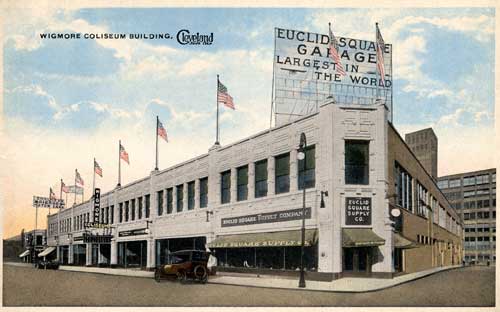October 17, 2009–July 11, 2010

Cars. We imagine them always in motion, but they spend most of their time at rest. We have all spent time in parking garages, but we rarely stop to think about what they have meant for our cities and ourselves. House of Cars: Innovation and the Parking Garage explores the unique relationship between parked cars and the built environment and encourages visitors to see these familiar structures in a whole new way. A showcase for innovation; a training ground for the 20th century’s best-known architects; and now, a new direction for sustainable city planning; the parking garage tells many stories.
As soon as there were cars, there was a parking problem, and cities responded both by finding ways to fit cars into old structures – such as carriage houses – and inventing a new building type made specifically for automobile storage. As the parking garage’s building type evolved, innovative engineers explored the best ways to lay out parking places and create structural systems to accommodate both cars and people.
The parking garage may have a reputation as an eyesore, but House of Cars challenges this notion using examples of well-designed garages that add a creative tapestry to our streetscapes. It concludes with the question, “What does the future hold for parking?” and invites visitors to think about new types of parking solutions.
